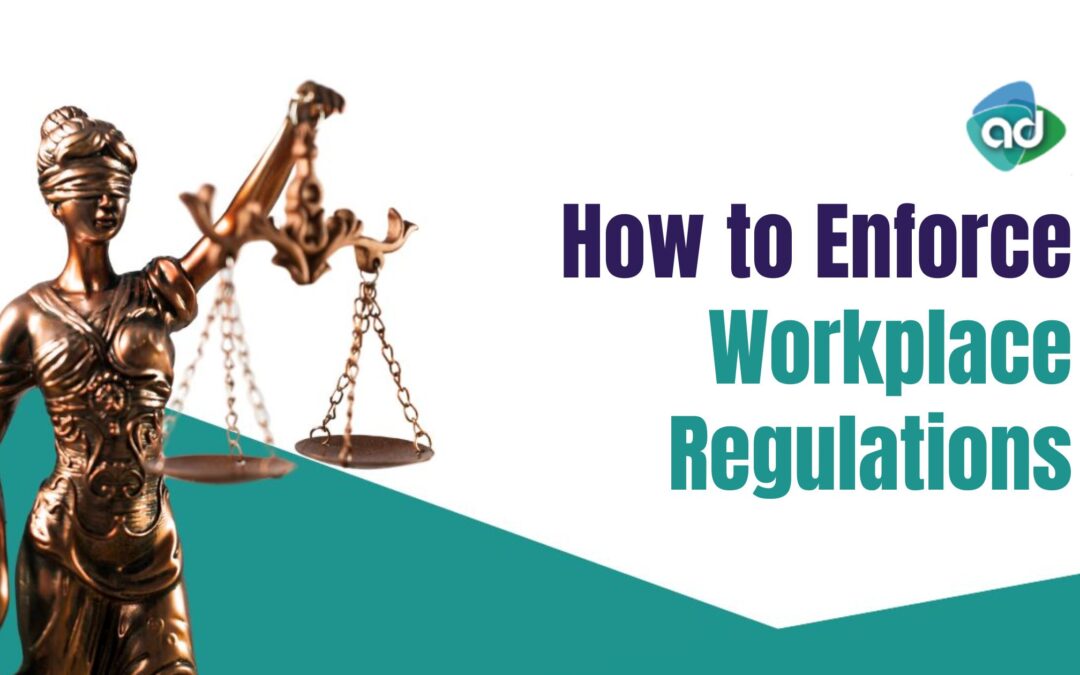The term “compliance” refers to adhering to workplace laws, regulations, and company policies. Maintaining compliance ensures a healthy and ethical work environment and prevents legal consequences and reputational damage to the organization. Employees must follow rules and regulations in any organisation to maintain a safe and productive work environment. However, ensuring compliance with these regulations can be challenging for employers. Workers may not always understand the importance of following these regulations or may choose to ignore them. This can lead to legal consequences, financial losses, and company reputation damage. To avoid these issues, employers must enforce compliance regulations in the workplace effectively. Here are 8 tips to to implement successfully compliance in your workplace.
1. Clearly Communicate Expectations
The first step to enforcing compliance is clearly communicating expectations and regulations to all employees. This includes creating a comprehensive employee handbook, conducting regular training sessions, and posting signs or reminders around the workplace. By ensuring that all employees know the regulations and their consequences, you are setting a standard they should adhere to.
2.Lead by Example
As a leader, it is important to practice what you preach. This means following the regulations yourself and serving as a role model for your employees. If your workers see that you are not following the rules, they may be less likely to take them seriously. By setting a positive example, you show your employees the importance of compliance and creating a culture of accountability.
3.Provide Ongoing Training and Education
Compliance regulations can often be complex and constantly changing. To ensure that your workers understand and follow these regulations, providing ongoing training and education is important. This can include in-person workshops, online courses, or even sending out regular email updates. By keeping your employees informed and up-to-date, you empower them to make informed decisions and avoid potential compliance issues.
4.Offer Incentives
Enforcing compliance through punishment alone is not always practical. Consider offering incentives or rewards for employees who consistently follow regulations. This can be in the form of bonuses, extra time off, or recognition within the company. By rewarding good behaviour, you encourage workers to comply with regulations and create a positive workplace culture.
5.Conduct Regular Audits and Inspections
Part of enforcing compliance is monitoring and evaluating the workplace to ensure that regulations are followed. Regular audits and inspections can help identify and address potential compliance issues before they become bigger problems. Ensure also to have a system for employees to report any concerns or violations without fear of retaliation.
6.Consistently Enforce Consequences
While incentives and rewards can encourage employees to follow regulations, enforcing consequences for those who do not comply consistently is important. This sends a clear message that compliance is a priority in the workplace and that there are consequences for not adhering to regulations. However, ensuring fair and consistent consequences for all workers is essential.
7.Use Technology to Monitor Compliance
Technology can be a powerful tool for enforcing compliance in the workplace. Various software and monitoring systems can help track employee behaviour and ensure that regulations are being followed. This can include time-tracking systems, access control systems, or even worker monitoring software. However, using these tools ethically and transparently is essential to avoid potential legal issues.
8.Foster a Positive Workplace Culture
Creating a positive workplace culture can greatly impact compliance in the workplace. Employees who feel valued and respected are likelier to follow regulations, while a toxic work environment can lead to defiance and non-compliance. Ensure to cultivate an atmosphere of trust, open communication, and respect within the organisation.
Conclusion:
Ensuring workplace compliance is essential for any organisation’s safety and success. By following these 8 tips, employers can effectively enforce compliance regulations and create a culture where all workers take regulations seriously. Communication, training, incentives, and consistently enforcing consequences are key to promoting a compliant workplace. Employers must also lead by example and foster a positive work environment to encourage workersto comply with regulations. Ultimately, enforcing compliance is a joint effort between employers and employees to create a safe and productive workplace.
